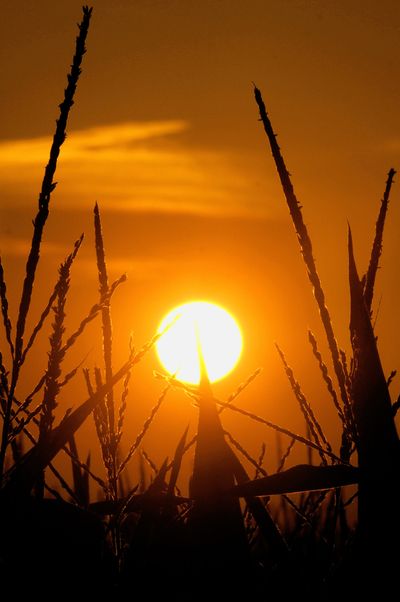July was a scorcher
Last month was hottest ever in U.S., beating record set in ’36

WASHINGTON – This probably comes as no surprise: Federal scientists say July was the hottest month recorded in the Lower 48 states, breaking a record set during the Dust Bowl of the 1930s.
And even less a surprise: The U.S. this year keeps setting records for weather extremes, based on precise calculations that include drought, heavy rainfall, unusual temperatures and storms.
The average temperature last month was 77.6 degrees. That breaks the old record from July 1936 of 77.4, according to the National Oceanic and Atmospheric Administration. Records go back to 1895.
“It’s a pretty significant increase over the last record,” said climate scientist Jake Crouch of NOAA’s National Climatic Data Center in Asheville, N.C. In the past, skeptics of global warming have pointed to the Dust Bowl to argue that recent heat isn’t unprecedented. But Crouch said this shows that the current year “is out and beyond those Dust Bowl years. We’re rivaling and beating them consistently from month to month.”
Three of the nation’s five hottest months on record have been recent Julies: This year, 2011 and 2006. Julies in 1936 and 1934 round out the top five.
Last month also was 3.3 degrees warmer than the 20th century average for July.
Thirty-two states had months that were among their 10 warmest Julies, but only one, Virginia, had the hottest July on record. Crouch said that’s a bit unusual, but that it shows the breadth of the heat and associated drought.
For example in 2011, the heat seemed to be centered mostly in Oklahoma and Texas. But this summer “the epicenters of the heat kind of migrated around. It kind of got everybody in the action this month,” Crouch said.
The first seven months of 2012 were the warmest on record for the nation. And August 2011 through July this year was the warmest 12-month period on record, just beating out the July 2011-June 2012 time period.
But it’s not just the heat that’s noteworthy. NOAA has a measurement called the U.S. Climate Extreme Index that dates to 1900 and follows several indicators of unusually high and low temperatures, severe drought, downpours, and tropical storms and hurricanes. NOAA calculates the index as a percentage, which mostly reflects how much of the nation experiences extremes. In July, the index was 37 percent, a record that beat the old mark for July last year. The average is 20 percent.